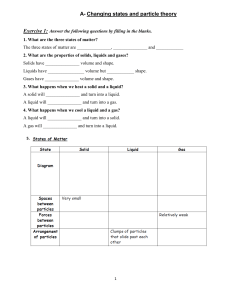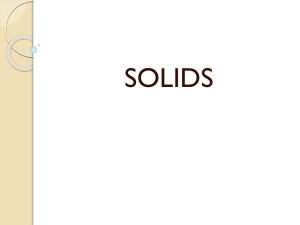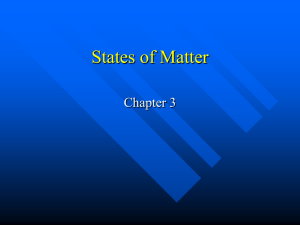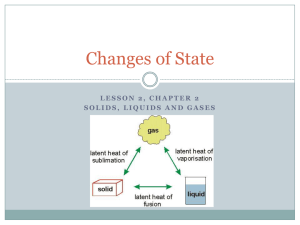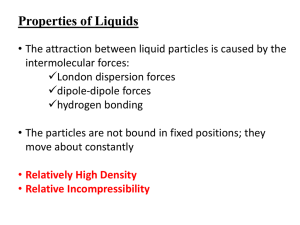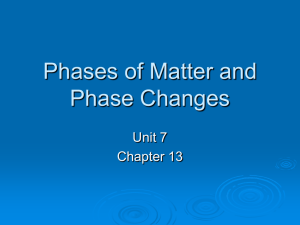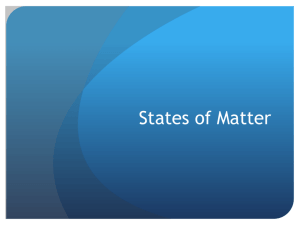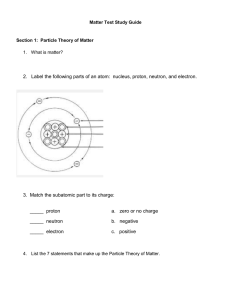Changes of State-Chapter 2 Section 2
advertisement
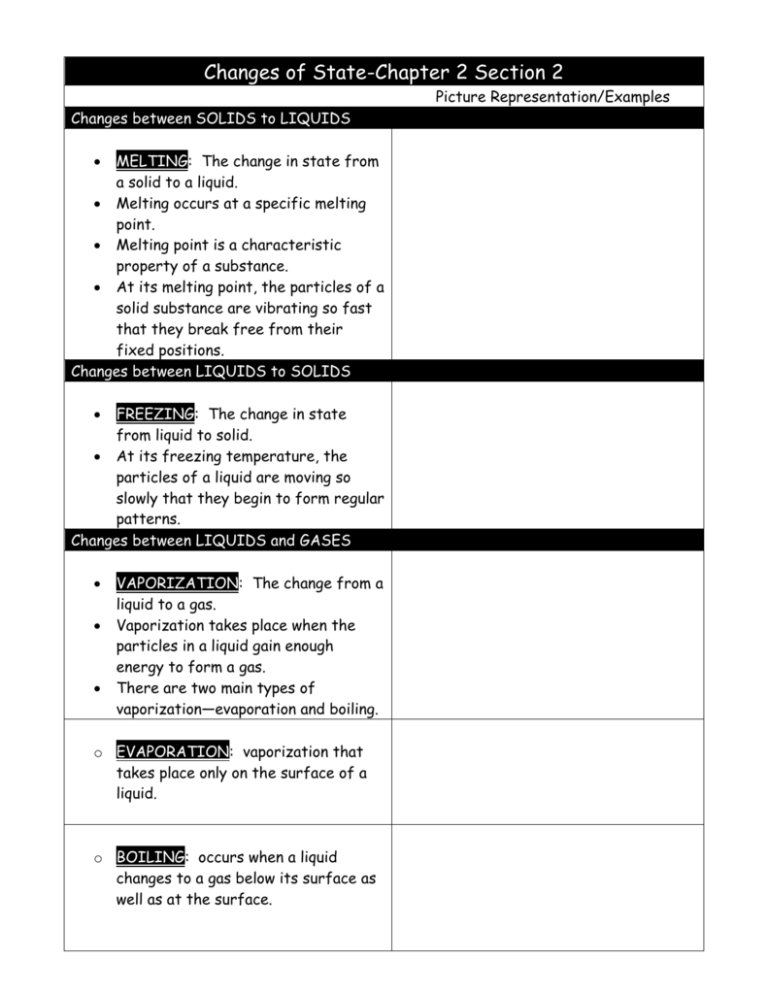
Changes of State-Chapter 2 Section 2 Picture Representation/Examples Changes between SOLIDS to LIQUIDS MELTING: The change in state from a solid to a liquid. Melting occurs at a specific melting point. Melting point is a characteristic property of a substance. At its melting point, the particles of a solid substance are vibrating so fast that they break free from their fixed positions. Changes between LIQUIDS to SOLIDS FREEZING: The change in state from liquid to solid. At its freezing temperature, the particles of a liquid are moving so slowly that they begin to form regular patterns. Changes between LIQUIDS and GASES VAPORIZATION: The change from a liquid to a gas. Vaporization takes place when the particles in a liquid gain enough energy to form a gas. There are two main types of vaporization—evaporation and boiling. o EVAPORATION: vaporization that takes place only on the surface of a liquid. o BOILING: occurs when a liquid changes to a gas below its surface as well as at the surface. Changes between GASES and LIQUIDS CONDENSATION: the opposite of vaporization. Condensation occurs when particles in a gas lose enough thermal energy to form a liquid. Water vapor is a colorless gas that is impossible to see. You see tiny droplets of water suspended in air. Changes between SOLIDS and GASES SUBLIMATION: occurs when the surface particles of a solid gain enough energy that they form a gas. During sublimation, particles of a solid so not pass through the liquid state as they form a gas. 1. Why does the evaporation of sweat cool your body on a warm day? _________________________________________________________ _________________________________________________________ _________________________________________________________ _________________________________________________________ _________________________________________________________ _________________________________________________________ 2. You are stranded in a blizzard. You need water to drink, and you’re trying to stay warm. Should you melt snow and then drink it, or just eat snow? Explain. _________________________________________________________ _________________________________________________________ _________________________________________________________ _________________________________________________________ _________________________________________________________ _________________________________________________________
